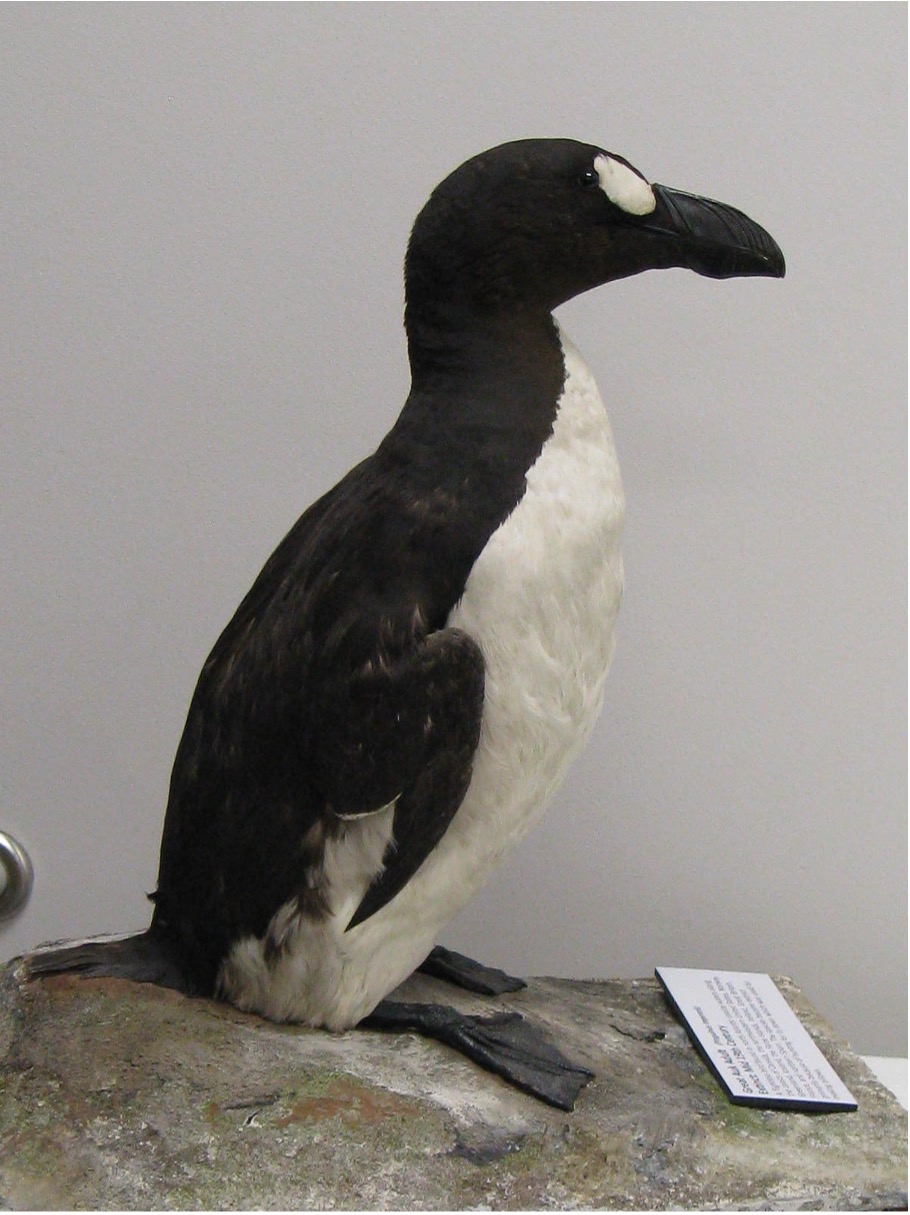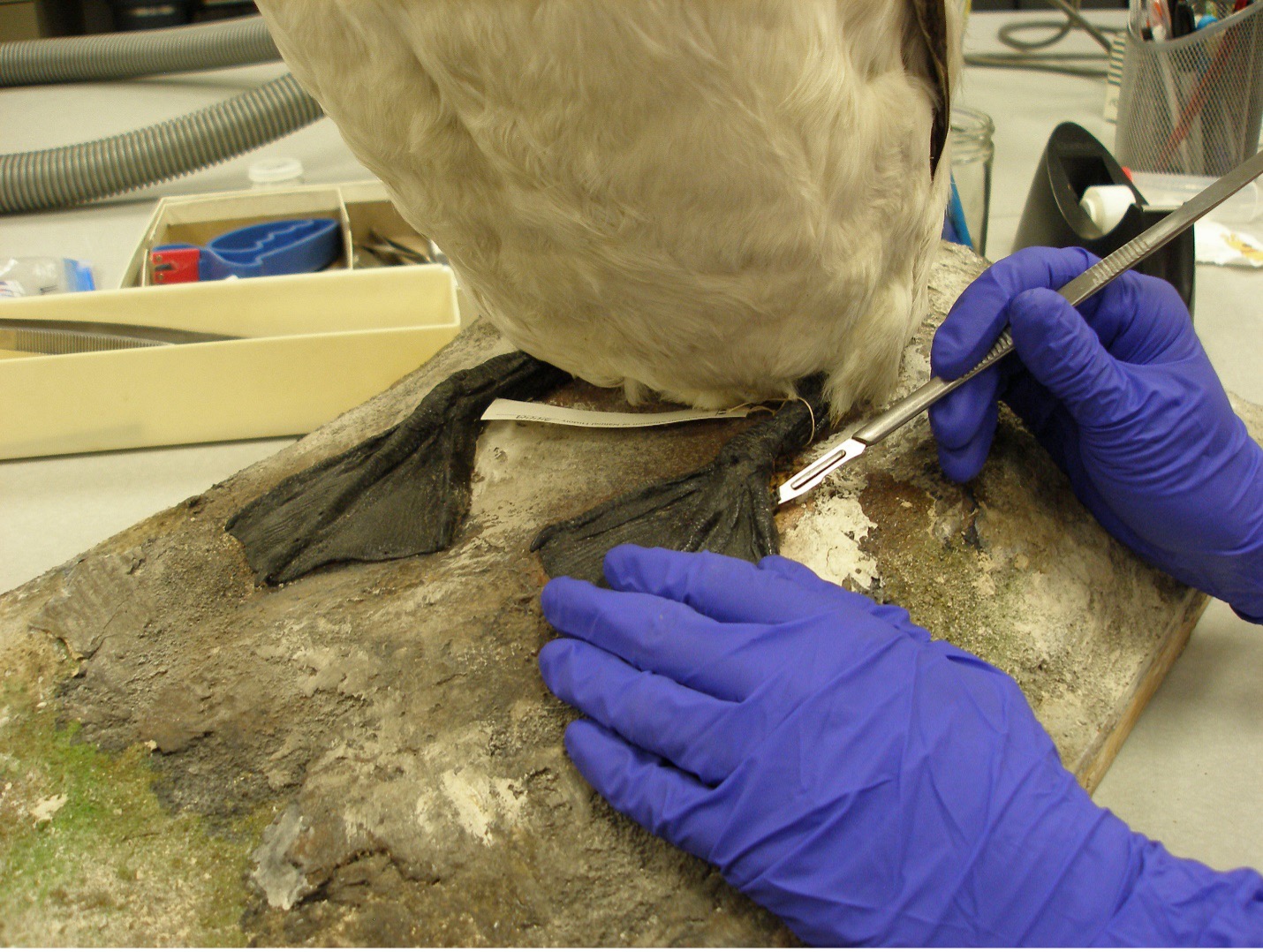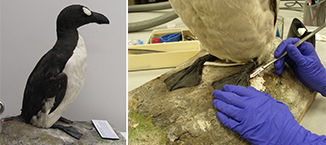
CMC Blog
Mystery solved! Is this the last Great Auk? [Part 2]
By: Heather Farrington, Curator of Zoology

In early 2020, Cincinnati Museum Center collected a tissue sample from our Great Auk and sent it off for genetic analysis to a research group in Europe. The sample was analyzed to confirm whether our auk was the last female collected in the wild. Might the remains of the last living female Great Auk reside in Cincinnati?
The Great Auk (Pinguinus impennis) was a penguin-like, flightless bird found along coastlines in the north Atlantic. It was valued for its meat, fatty oils and feathers, and was hunted to extinction in the mid-1800s. As the bird became more rare, collectors paid handsomely for specimens. In 1844, the last documented Great Auks (a breeding pair) were captured at Eldey Rock, an island off the coast of Iceland. The birds were killed, and their carcasses were sold on the mainland. When the birds were skinned, some soft tissues from each were preserved in alcohol and ended up in the fluid collections of the Natural History Museum of Denmark. The fate of the skins of these last known birds remained a mystery until 2017, when an international team of scientists released their findings of an investigation into this question.
The researchers extracted DNA from the preserved soft tissues of both the male and female bird and set about trying to find genetic matches with the 80+ known remaining Great Auk skins held in collections worldwide. To narrow the search, historical sale and auction records and personal correspondence were used to track the history of each specimen. As a result of this study, a match was found for the male - the taxidermied skin held at the Institut Royal des Sciences Naturelles de Belgique in Brussels, Belgium, known as the ‘Brussels Auk.’ There was no match found for the female soft tissue sample.
Due to historical documentation, the researchers were confident that the female Great Auk skin was one of four sold in London in the 1970s. One of those was purchased for Cincinnati and is held in our Zoology Collection. After the researchers published their paper, they contacted us to request a tissue sample from our Great Auk to determine whether it was the last female. We agreed to provide a tissue sample to hopefully solve this great mystery!
We needed to take a sample that would be minimally destructive to the specimen, leaving no visible damage – the underside of the foot is a commonly used spot. We drilled a hole in the wood and plaster base to give us access to the bottom of the foot, then inserted a scalpel to cut off a sliver of the foot pad. The sample was then sent to the researchers for analysis.

Does the last female Great Auk reside in Cincinnati? Yes! The foot sample we sent was a perfect DNA match to the female tissue. The results were written up, peer reviewed by scientists in the field and published in the Zoological Journal of the Linnean Society. Our Great Auk specimen now joins the list of other “endlings” (the last known members of an extinct species) like Martha the Passenger Pigeon and Incus the Carolina Parakeet, both of which died at the Cincinnati Zoo over 100 years ago.
Many thanks to the dedicated researchers who solved this mystery. Although this is a tragic story about the loss of a species, we are honored to care for and preserve this specimen at Cincinnati Museum Center. Here is a link to the published article — hunt for the last great auks: ancient DNA resolves a 180-year-old mystery | Zoological Journal of the Linnean Society | Oxford Academic
Buy Tickets
Museum Admission includes Cincinnati History Museum, Museum of Natural History & Science and The Children’s Museum.
Members receive discounts!
Become a Member today to save on programs, exhibits and films throughout CMC.
Museum Hours
Open Thursday – Monday
10 a.m. to 5 p.m.
Closed Tuesday and Wednesday
Closed Thanksgiving Day and Christmas Day
Member’s-only early entry: Saturdays at 9 a.m.
Customer Service Hours:
Monday – Sunday, 9 a.m. to 5 p.m.



